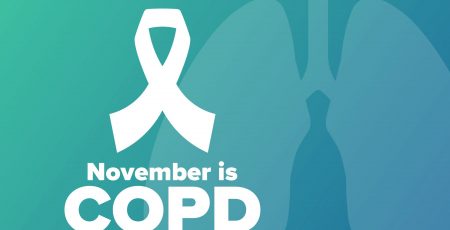19 Oct Does COPD Discriminate Against Women? Differences in COPD Between the Sexes
You’d think that a disease would not discriminate between men and women, but COPD does. The manifestations of COPD, both biological and cultural, differ between the two sexes. This difference has importance in both properly diagnosing and treating the disease.
Not only does the disease affect men and women differently, but doctors (statistically speaking) treat male and female COPD patients differently as well. Most significant are the data regarding diagnosis of the disease itself. More women than men are underdiagnosed or misdiagnosed every year, often being diagnosed with asthma when COPD is the correct diagnosis.
It also appears that genetic factors play into the difference in the effects of COPD on men and women.
Recent sex- and gender-specific studies on COPD indicate that the disease is now almost as prevalent among women as among men, and the number of female cases is continuing to rise. At the same time, mortality rates are decreasing more significantly among men with COPD than among women.
COPD Differences Between Men and Women
Here are some of the sex-based differences, called sexual dimorphisms, that have been revealed by epidemiological data from around the world:
- Women may be more vulnerable to developing COPD due to exposure to risk factors such as cigarette smoking.
- Women may, on average, experience more rapid and severe progression of the disease, and this difference may be due in part to lung and airway size differences.
- Women with COPD may experience more difficulty with smoking cessation. When they do successfully quit smoking, however, they may benefit more greatly from the cessation than do men.
- Men are more apt to develop emphysema, while women are more likely to develop small airways disease.
- Women COPD patients tend to be younger and of a lower socioeconomic class, have lower body mass index, and smoke less than men with COPD.
- Women with COPD have more severe dyspnea (shortness of breath) and more frequent COPD exacerbations than male COPD patients.
- Women have a higher rate of airway hyperresponsiveness (“twitchiness in response to irritants), which is a marker for decline in lung function.
- Additional health problems such as asthma, osteoporosis, inflammatory bowel disease, chronic heart failure, and diabetes are more prevalent among female than male COPD patients.
- In general, women with COPD have a poorer quality of life than men.
- Anxiety and depression affect more female COPD patients than men and tend to be more severe.
- Finally, notes James F. Donohue, MD, Department of Medicine, University of North Carolina School of Medicine, Chapel Hill, NC, “anxiety can be associated with worsening dyspnea as can social isolation, which affects more women.”
Genetic Components in Differences in COPD Between Men and Women
There is little data on why COPD affects women differently than men, but in a study reported in March 2017, it was suggested that women may possess genetic variants in the lung development gene CELSR1. These variants may affect the formation and structure of the actin-myosin lung cytoskeleton and lung branching. The resulting changes in the lung may increase susceptibility to COPD related to smoking.
The Importance of Spirometry in Correctly Diagnosing COPD
A study on the diagnosis of COPD among men versus women found that the doctors involved in the study underdiagnosed COPD in general, and more markedly among women. However, when spirometry information was used to aid diagnosis, there were fewer underdiagnoses of COPD and less evidence of gender bias.
It was suggested by Dr. Donahue that clinicians should perform objective tests like spirometry when adults of either sex who smoke have symptoms such as wheezing, dyspnea, and cough. Experts also suggest that environmental exposures should be considered when taking a patient’s history.
Information for this article was obtained from Med Page Today.





Sherry
Posted at 07:48h, 20 OctoberI have severe pain and anxiety with my copd
Anita Gash
Posted at 12:55h, 21 OctoberThe article states ” Men are more apt to develop emphysema, while women are more likely to develop small airways disease.” What is small airway disease and how is it different than emphysema? Are there COPD drugs that take into account these differences?
PERF
Posted at 12:06h, 22 OctoberDear Anita,
COPD is a term that was created some 40 years ago to encompass two distinct lung diseases: chronic bronchitis and emphysema. Chronic bronchitis involves the lung air passages, narrowing them and making them subject to collapse during exhalation. Emphysema involves the “substance” of the lungs: destroying the areas where oxygen and carbon dioxide exchange occurs. Though the two are pretty distinct processes, they both lead to similar symptoms (e.g., shortness of breath) and they are both strongly related to cigarette smoking. Further, many COPD patients have both chronic bronchitis and emphysema components. Finally, our current treatments (e.g., bronchodilators, pulmonary rehabilitation) are used in both.
We are starting to see some treatments that might be used differently in chronic bronchitis vs. emphysema (e.g., lung volume reduction for emphysema) and will probably see more in the future.
I hope this helps.
~ Rich Casaburi